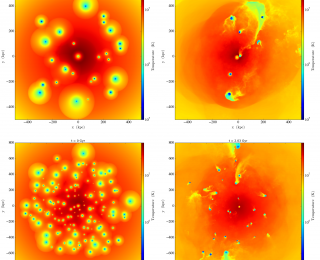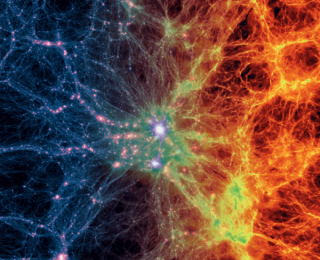
by Andrew Emerick | May 19, 2015 | Daily Paper Summaries
The evolution of a galaxy is strongly dependent upon the environment the galaxy lives in. Galaxies moving through galaxy groups and galaxy clusters can get stripped of their gas that would otherwise be used to form stars. Today’s astrobite discusses simulations of the stripping and removal of the hot, gaseous coronae that surround galaxies.

by Meredith Rawls | Mar 20, 2015 | Daily Paper Summaries
You can’t model RW Aurigae as a single star with a disk of material around it, because there is a second star. And you can’t model it as a regular old binary system either, because there are interactions between the stars and the asymmetric disk. The authors of today’s paper create a comprehensive hydrodynamic model that considers many different observations of RW Aurigae.

by Michael Zevin | Mar 11, 2015 | Daily Paper Summaries
The massive binary star system Eta Carinae has been examined like never before in a recent study. Read on to hear the new discoveries from this approach, and the potential it opens for astrophysical research.

by Andrew Emerick | Jan 27, 2015 | Daily Paper Summaries
Feedback processes, like supernova and AGN, are essential for accurately simulation galaxy formation and evolution. Today’s astrobite examines the role of radiation feedback in galaxy formation in new “radiation hydrodynamics” simulations of galaxies.

by Andrew Emerick | May 12, 2014 | Daily Paper Summaries
High resolution computational simulations are a valuable means by which Astronomers test our understanding of the Universe, and make predictions. The world of computational astrophysics broke new ground recently with the highest resolution cosmological simulation to date, Illustris, making for some spectacular science and some spectacular images.

by Elisabeth Newton | Mar 28, 2012 | Daily Paper Summaries
The impact of comet Shoemaker-Levy 9 was a remarkable event: in 1994, a comet, torn into pieces during a close approach with Jupiter two years prior, crashed into Jupiter. It was the first collision between two solar system bodies to ever be observed, and the effects on Jupiter’s atmosphere (see the figure below) were visible for months. At the time, Harrington et al. (2004) predicted that it would be hundreds of years before such an event occurred again. But two and a half years ago, another object collided with Jupiter. No one witnessed the collision, but amateur astronomer A. Wesley noticed a dark streak with properties closely matching those seen after the impact of SL-9. Because of these similarities, it is believed that this feature was the result of an impact.






